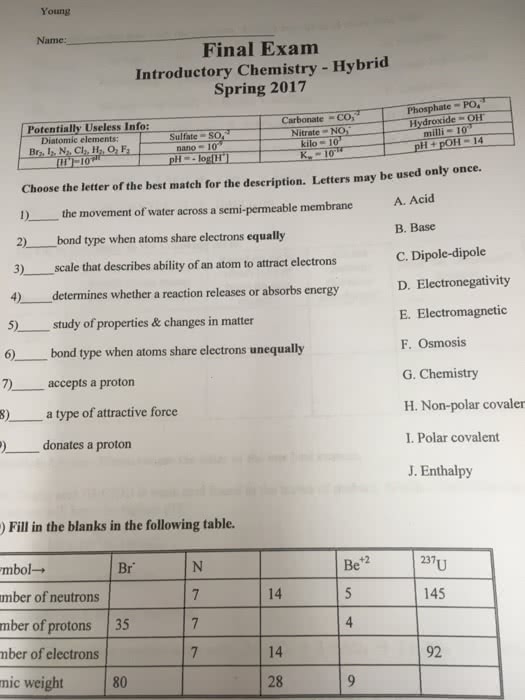CHM 111 Lecture Notes - Lecture 21: Surface Tension, Lean Body Mass, Herbicide

CHM 111: Tuesday, May 3rd
Day 21 Notes
Chemistry in Modern Society
Electronegativity scale
• The ability of an atom in a covalent bond to attract the shared electron pair is called
electronegativity
• Dipole: arrow showing the movement of electrons.
o Points toward the more electronegative element
Electronegativity and Bond Polarity
• Ionic Bond: electrons are not shared. Atoms lose/gain electrons.
• Polar Covalent Bond: the electron pair is not shared equally. This causes the more
electronegative atom of the bond to be partially negative and less electronegative atom
to be partially positive
• Non-Polar Covalent Bond: the electron pair is shared equally

CHM 111: Tuesday, May 3rd
Day 21 Notes
Molecular Shape and Molecular Polarity
• Overall molecular polarity depends on both shape and bond polarity
o A molecule is polar if
▪ It contains one or more polar bonds and
▪ The individual bond dipoles do not cancel (not symmetrical)
Determining Molecular Polarity
• Listed Below are some example with explanations
Like Dissolves Like
• Compounds with similar chemical composition and molecular structure tend to form
solution
o Consider ethanol and Water
• Compounds with different chemical composition and molecular structure with not mix
o Consider oil and water

CHM 111: Tuesday, May 3rd
Day 21 Notes
Like Dissolves Like (continued)
• Polar
o Water soluble compounds: ionic and polar covalent
o Hydrogen bonding
o Hydrophilic: “water-loving”
• Non-Polar
o Hydrocarbon compounds
o Oils/Fats
o Extracted with organic solvents (like petroleum ether)
o Hydrophobic- “water fearing”
What Makes Water Special
• Water is polar. It will form solutions with other polar substances
o Dissolving is the process in which these molecules interact and attract each other
to form a solution
• Water molecules are held together by hydrogen bonds (in solids and liquids)
o Strong intermolecular bonds
o High surface tension, high melting points, ice (less dense) vs. liquid water
• High specific heat: amount of heat energy that must be absorbed to increase the
temperature of 1 gram by 1 degree Celsius.
Document Summary
Day 21 notes: the ability of an atom in a covalent bond to attract the shared electron pair is called electronegativity, dipole: arrow showing the movement of electrons, points toward the more electronegative element. Atoms lose/gain electrons: polar covalent bond: the electron pair is not shared equally. This causes the more electronegative atom of the bond to be partially negative and less electronegative atom to be partially positive: non-polar covalent bond: the electron pair is shared equally. Day 21 notes: overall molecular polarity depends on both shape and bond polarity, a molecule is polar if. It contains one or more polar bonds and: the individual bond dipoles do not cancel (not symmetrical) Determining molecular polarity: listed below are some example with explanations. Like dissolves like: compounds with similar chemical composition and molecular structure tend to form solution, consider ethanol and water, compounds with different chemical composition and molecular structure with not mix, consider oil and water.


